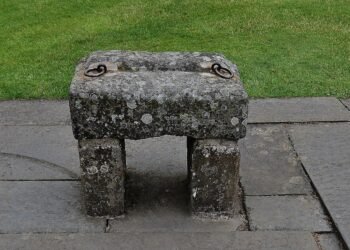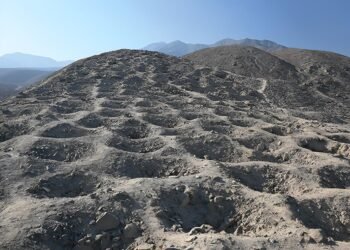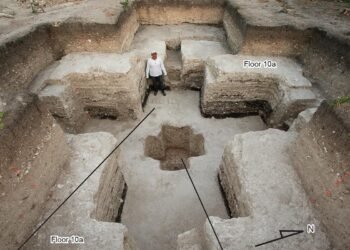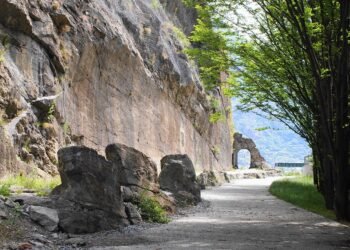A team of archaeologists has uncovered a unique early medieval cult site in the eastern Netherlands, near the hamlet of Hezingen, providing new insight into pre-Christian rites. The discovery, detailed in the journal Medieval Archaeology, offers crucial insights into the religious practices of the local elites during a time of cultural transformation.
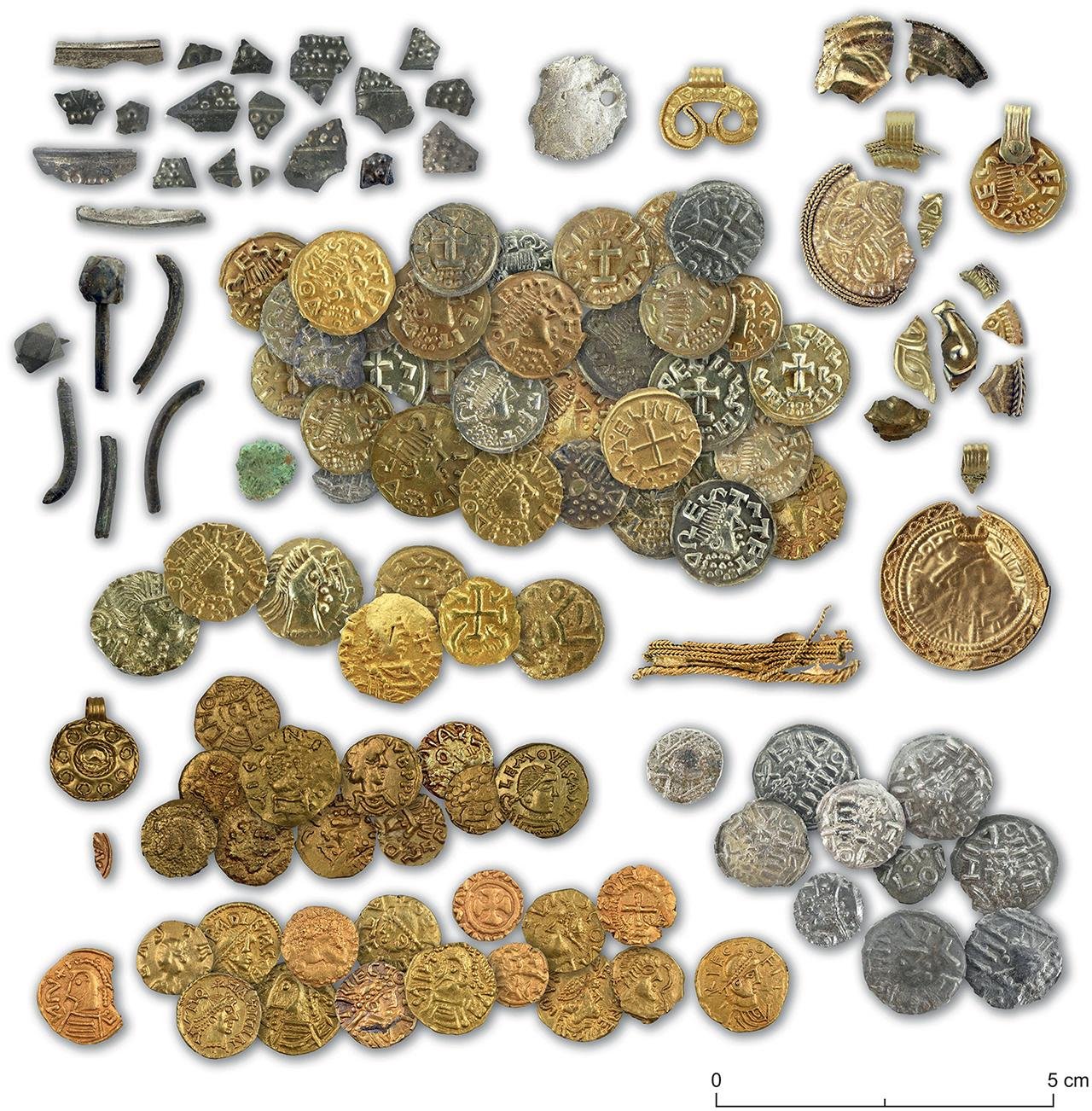
The site first came to light about five years ago following the discovery of gold and silver coins by metal detectorists, after which a full-scale excavation commenced from 2020 to 2021. More than 190 finds were reported, including gold tremisses (small gold coins), silver earrings, and a gold pendant, concentrated around wooden pillars and a large rock. These findings suggest that Hezingen was an important worship center where ritual offerings were made.
Excavations suggest that Hezingen consisted of a large circular structure made up of wooden posts surrounding an unusually shaped building, possibly a Herrenhof—an elite leader’s residence—dating back to the 6th century. Seventeen postholes were identified, with wooden pillars aligned in an east-west direction. This direction likely suggests that the site was used for seasonal rituals during the spring and autumn equinoxes, possibly linked to sowing and harvesting ceremonies.
Artifacts were found in three key locations within the site. One contained a single gold coin, while the second had almost two dozen fragmented and complete tremisses, a gold pendant, and a silver earring. A third site held other fragments of gold coins and a small pendant. Chemical analysis of the soil indicated the presence of bones, which suggests that animal sacrifices were part of the rituals practiced at Hezingen.
Researchers believe that Hezingen was primarily used by local elites, who left high-value offerings to emphasize their social and religious status. The presence of gold and silver offerings aligns with medieval missionary texts that describe how pre-Christian communities practiced rituals involving the gifting of valuable items. These texts refer to such offerings as diobolgeldæ, or “devil’s money,” and note that individuals seeking to convert to Christianity had to renounce these practices.
This cult site was in use for some 100 years before it was abandoned in the late 7th or early 8th century. The reason for its abandonment is still a puzzle, but researchers have suggested several possibilities. One theory posits that the local elite, who held control over the site, may have converted to Christianity earlier than the rest, thus ceasing their paganism. Another possibility is that Christian missionaries such as Plechelmus and Lebuinus, who were known to be active in the region around 760 CE, may have desecrated or repurposed the site.
Pre-Christian cult sites in the Netherlands, northern Germany, and Britain are far less studied compared to those in the Nordic world, where more extensive research has been conducted on pagan rituals. This makes Hezingen an exceptionally valuable discovery, offering a rare glimpse into a society on the cusp of religious transformation.



